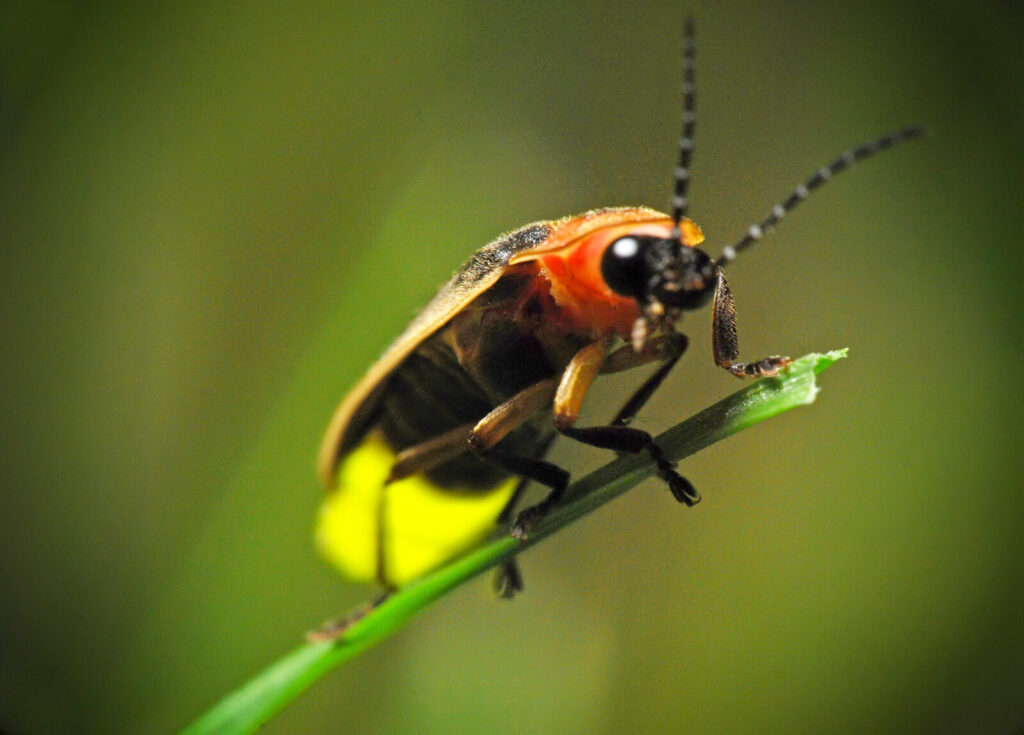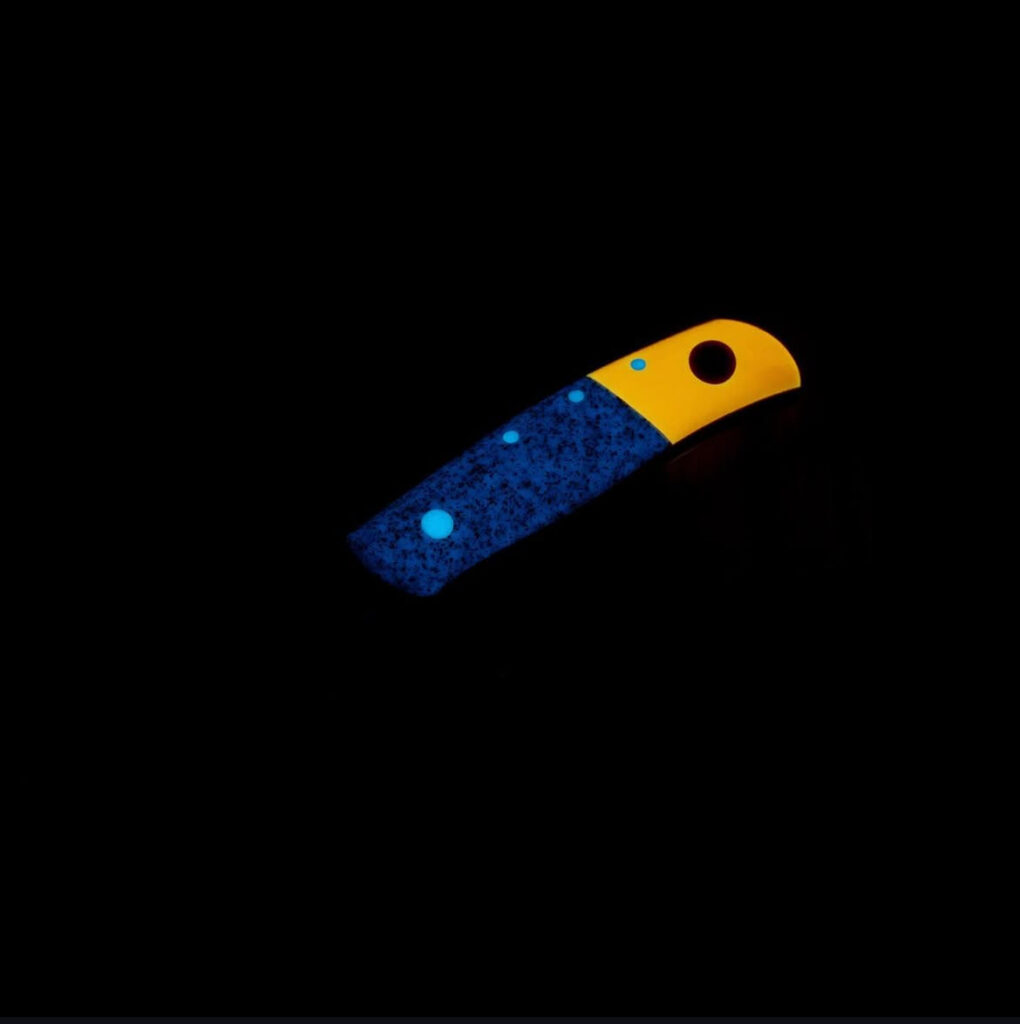Why is it that the deer of a lifetime is always shot just before dark? Why do you always need to re-tie your fly just as the sun sinks down below the mountains? Why do we always need to split kindling to get the fire going under the cover of darkness? It sure seems like we need our knives the most when they are most likely to get lost in the dark.
I can’t count how many times I’ve set my knife down in low light conditions and proceeded to spend the next 5 minutes looking for it. Not only is this an annoying occurrence, it’s also dangerous! There is nothing like a razor’s edge out in the open waiting to bite anything that comes in contact with it. YIKES! Responsible knife users who always re-sheath their knives when not in use never have this issue, but I’m willing to bet most of you are a bit more like me.
With modern glow materials, misplaced knives can be a thing of the past. The only issue is the glow material needs light to charge and knives spend most of their lives deep inside of sheaths. This fact limits the practicality of glow in the dark knife scales. I suppose you could shine a flashlight over the scales before you begin using the knife to ensure there is enough charge to make them glow, but that seems hindersome and impractical. You could also shine a flashlight on the ground to charge the handle of a misplaced knife. Again, this is impractical and defeats the purpose of the glow material.
I spent some time thinking about this conundrum and I realized that even in deep carry sheaths, the pommel of the knife is still exposed to sunlight. This realization convinced me that glow in the dark handle scales do have some practicality and are a good solution to knife visibility in low light conditions. Problem solved, right? Wrong. While glow in the dark scales solve the problem of visibility in low light, they create another equally important problem. Grip. Glow materials are resin based and are often slippery when wet. Slippery knives are dangerous knives. Materials like micarta, wood, and even G-10 offer some amount of grip when wet and slimy, more so than materials that are strictly resin.

Instead of one problem we now have two. How can we solve the issue of knife visibility in low light conditions while still maintaining some amount of grip in the handle? Again, I began postulating and realized that bolsters on knives are cool, glow materials are cool, and grip is cool. Why not combine all three things together and make an awesome handle? Thats exaclty what I did, and the FireFly scale set was born.
I think the namesake is pretty obvious, but in case it isn’t I’ll explain. Growing up in the midwest one of the most commmon pastimes in the summer is catching lighnting bugs, or fireflies. Fireflies are flying insects that come out on warm summer evenings and glow. The firefly has bioluminescent properties in it’s abdomen that make it light up. The purpose of this “glow” is primarily to attract mates, but can be used for other purposes. Like lightning bugs, the FireFly scale set also has a glowing “abdomen” that is visible in the dark.


FireFly scales were designed with the outdoorsman in mind, but they are perfectly suitable for anyone who likes bolsters, glow in the dark material, or anyone who spends time working in low light conditions. FireFly scales are offered with many different wood selections, as well as canvas micarta, linen micarta, burlap micarta, carbon fiber, rubberized carbon fiber, and Grip-Tec. Really, the options are limitless. If you see any CCK knife labeled as FireFly, rest assured knowing the pommel glows and you won’t be left out in the dark!
